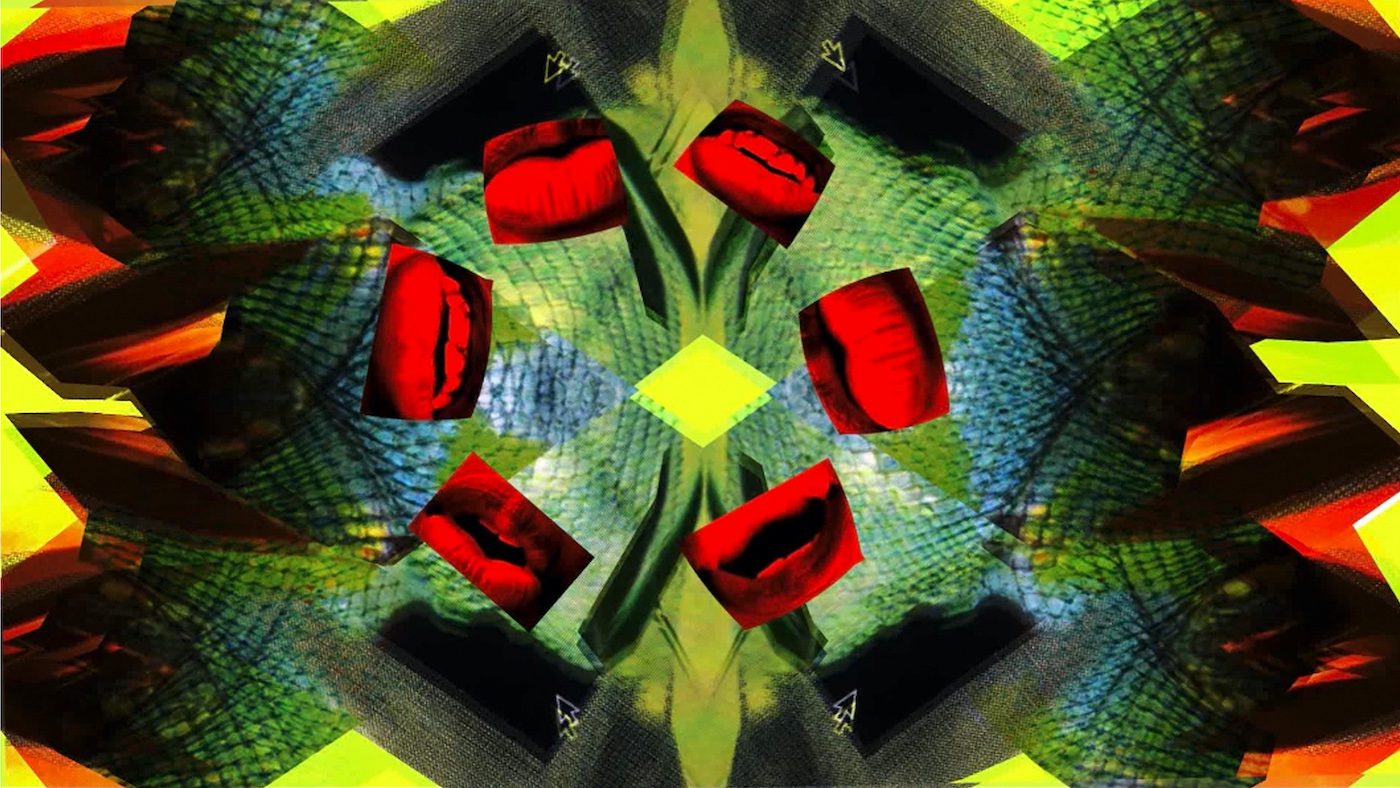Nkiruka Oparah is a non-binary artist, writer, and curator working with multiple mediums to explore plural identities, techno-cosmological forms for self-reinvention, and more. They are one of the artists featured alongside Contemporary And, The Nest Collective, CUSS with Vukani Ndebele, and Frida Orupabo in the exhibition HERE AND NOW at Museum Ludwig: Dynamic Spaces, curated by Romina Dümler in Cologne. Ahead of the opening we spoke to Oparah about the multimedia installation they will present based on a series of works that started as a reflection on creation and origin points.

Nkiruka Oparah, SUOON, Tile 1 (Detail), 2020. Courtesy the artist.
Contemporary And: You work with various media. With which ones did you start your practice and how did you move forward?
Nkiruka Oparah: My practice started out with drawing and collage. I moved from paper collage to digital collage because it was very accessible, low cost, and infinitely sourceable. I became super fascinated by the endless looping of GIFs on the internet and would use them to explore gestures, subtle changes in an image, the body. During my MFA I got access to my first studio space, which allowed me to expand even more. I’ve tried to narrow down the mediums I use but … I just end up breaking my own rules. Recently, I’ve been telling myself that my practice is primarily a drawing one. The work then extends into textiles, printed matter, performance, and video.
C&: How do you differentiate between your practices as an artist, curator, and writer?
NK: Currently, most of the curatorial work I do is within the context of my collective, 5/5 (Five Fifths). We curate group shows, and I’ve co-curated shows in the past. Writing is a big part of my practice as well, mostly in the form of poems or meditations on a particular feeling or concept. I’ve been playing with slowing the writing down into sounds as of late.
C&: Why is it important for you to engage with the idea of essential identity, and how do you do that through your artistic practice?
NK: I guess what I am really wanting to express is the idea that our selves are plural rather than singular. I think it’s helpful to get intimate with the many selves of the psyche that are making up a personality rather than attaching to one part or another. I’ve also made a good bit of work (masks, soft sculptures, performed drawings) that are about and/or for communicating with ancestors, land, and other immaterial presences across time. The way I draw the body now has changed since I started making digital collages. I’m constantly thinking about the body on both a cosmic and microscopic scale. One motif that I use a lot in my drawings is a dot with a circle around it. For me, it symbolizes so many things: an eye, a single cell, a planetary body with an orbit ring, a microbe, self-organizing consciousness in space, a quanta and its field. I use that motif and build up landscapes and figures so that the form is made up of so many little cell-eyes. I want to get away from rendering a person as an individual, as a single, autonomous organism. I want the drawings to convey these more expanded, symbiotic relationships that make up a self.
C&: Your current work focuses on the relationship between printed images, digital objects, and the body. How do you negotiate the tension that arises from bringing some of these together?
NK: I am still trying to figure that out, honestly. The only way I know how to negotiate the tension is to feel it all. To be okay with failure. To be patient with whatever is trying to get out. I think moving back and forth between handmade objects and digital objects is such a phenomenon of the times we live in. I’ve been slowing down the back and forth by making slow, meditative drawings with detailed line work. I’ve learned so much about myself and what’s driving the images through the slowness. Writing helps too. I’ve come to really enjoy drawing on an iPad, but I still haven’t made something that really connects all three the way I want. I’d really like a larger studio space so that I can explore the possibilities of scale.
C&: Could you talk me through your work for the Ludwig Museum?
NK: I’ll be showing a multimedia installation. It’s comprised of a video work and a large hanging drawing/digital collage on fabric. Both works come out of my current project, SUOON. This series of works started as a reflection on creation and origin points. How does my notion of here, of a genesis point, orient me toward (or away from) the world that unfolds around me? How did my notion of a here move or paralyze me? My body? The works are driven by an interest in developing new language around gender, media experiments about liminal shape-shifting characters in intersectional time orientations, and diasporic place-making. SUOON attempts to create a space which begins to map my current worldview and ideas about selfhood. The drawings are propositions for these inquiries, while the animations and video work serve as techno-cosmological forms for self-reinvention. A practice in world-building.
HERE AND NOW at Museum Ludwig: Dynamic Spaces runs from June 6 to August 30, 2020.
Interview by Will Furtado.
More Editorial